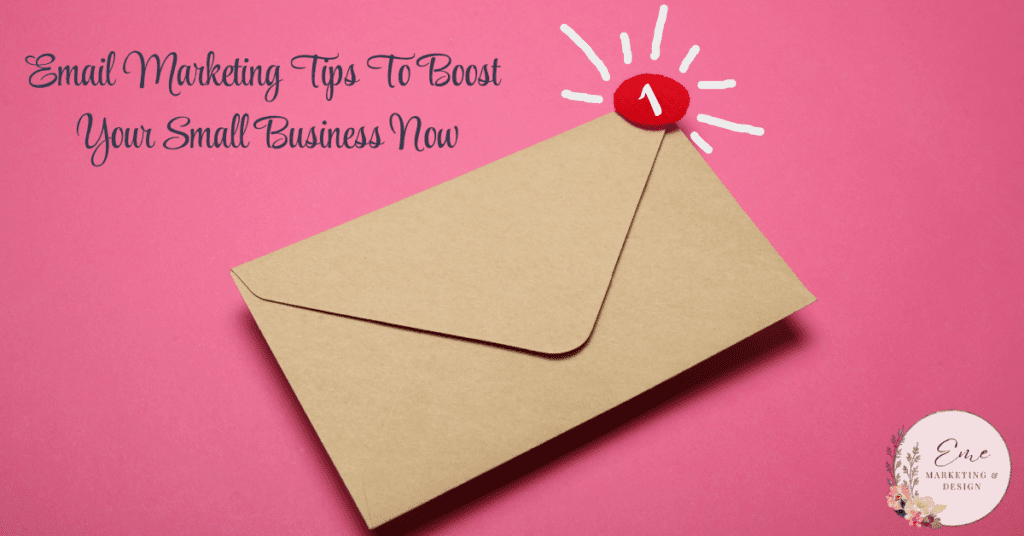
Email marketing remains one of the most effective tools for small businesses to engage with their audience, build relationships, and drive sales. With the right strategies, email marketing can provide a significant return on investment (ROI) and help your small business grow. Here are some essential email marketing tips to help you boost your small business.
1. Build a Quality Email List
The foundation of successful email marketing is a high-quality email list. Here’s how you can build and maintain one:
- Offer Valuable Incentives: Encourage people to subscribe by offering something valuable in return, such as a discount, a free eBook, or exclusive content.
- Use Sign-Up Forms: Place sign-up forms on your website, blog, and social media pages. Make the process straightforward.
- Collect Emails Offline: If you have a physical store, collect email addresses at the point of sale. You can also gather emails at events, trade shows, and networking gatherings.
2. Segment Your Email List
Segmentation involves dividing your email list into smaller groups based on specific criteria. This lets you send more personalized and relevant emails, increasing engagement and conversions. Common segmentation criteria include:
- Demographics: Age, gender, location, and occupation.
- Behavior: Purchase history, email engagement, and website activity.
- Preferences: Interests, product preferences, and communication preferences.
3. Create Compelling Subject Lines
The subject line is the first thing recipients see and is crucial in whether they open your email. Here are some tips for crafting compelling subject lines:
- Keep It Short and Sweet: Aim for 50 characters or less.
- Create a Sense of Urgency: Use words encouraging immediate action, such as “limited time” or “exclusive offer.”
- Personalize When Possible: Include the recipient’s name or tailor the subject line to their interests.
- A/B Test Different Subject Lines: Experiment with different subject lines to see which perform best.
4. Craft Engaging Content
Your email content should be engaging, relevant, and provide value to your subscribers. Here are some content tips:
- Start with a Strong Opening: Grab your reader’s attention with a compelling opening line.
- Be Concise: Keep your emails to the point and avoid unnecessary information.
- Use a Conversational Tone: Write as if speaking directly to the reader.
- Include a Clear Call to Action (CTA): Make it easy for readers to take the next step, whether purchasing, signing up for an event, or reading a blog post.
- Incorporate Visuals: Use images, videos, and infographics to make your emails visually appealing.
5. Optimize for Mobile
A significant portion of your audience will open emails on their mobile devices. To ensure a positive experience, optimize your emails for mobile:
- Use Responsive Design: Your email should look great on desktop and mobile devices.
- Keep Text Short: Mobile screens are smaller, so keep your text concise and easy to read.
- Use Large Buttons: Ensure your CTAs are easy to tap on a mobile screen.
- Test on Multiple Devices: Preview your emails on different devices to see how they look and function.
6. Automate Your Campaigns
Email automation can save you time and help you deliver timely, relevant content to your subscribers. Here are some automated campaigns to consider:
- Welcome Series: Introduce new subscribers to your brand and set expectations.
- Abandoned Cart Emails: Remind customers about products they left in their cart.
- Birthday or Anniversary Emails: Send personalized messages on special occasions.
- Re-engagement Campaigns: Reach out to subscribers who haven’t engaged with your emails.
7. Analyze and Improve
To continuously improve your email marketing efforts, analyzing your performance and making data-driven decisions is essential. Key metrics to track include:
- Open Rates: The percentage of recipients who open your email. A low open rate may indicate that your subject lines need improvement.
- Click-Through Rates (CTR): The percentage of recipients who click on a link within your email. A low CTR may suggest that your content or CTAs must be more compelling.
- Conversion Rates: The percentage of recipients who take the desired action, such as purchasing or signing up for an event. A low conversion rate may indicate that your landing page or offer needs work.
- Bounce Rates: The percentage of emails that couldn’t be delivered. A high bounce rate may indicate issues with your email list quality.
8. Follow Email Marketing Best Practices
Adhering to best practices ensures that your emails are well-received and compliant with regulations:
- Obtain Consent: Always get permission before adding someone to your email list.
- Provide an Easy Unsubscribe Option: Make it easy for subscribers to opt out if they choose.
- Maintain a Clean List: Regularly remove inactive or invalid email addresses.
- Comply with Regulations: Follow email marketing laws, such as the CAN-SPAM Act in the United States and GDPR in the European Union.
9. Personalize Your Emails
Personalization goes beyond just using the recipient’s name. It involves tailoring your content to the preferences and behaviors of your subscribers. Here’s how:
- Use Dynamic Content: Show different content to different segments of your audience.
- Recommend Products: Suggest products based on past purchases or browsing behavior.
- Send Personalized Offers: Offer discounts or promotions tailored to individual preferences.
10. Encourage Engagement
Engaged subscribers are more likely to convert. Encourage engagement with these tactics:
- Ask Questions: Invite subscribers to reply to your emails with their thoughts or feedback.
- Create Interactive Content: Use surveys, quizzes, and polls to engage your audience.
- Highlight User-Generated Content: Feature customer reviews, testimonials, and photos in your emails.
11. Leverage Social Proof
Social proof can build trust and encourage conversions. Incorporate these elements into your emails:
- Customer Reviews: Share positive reviews and testimonials.
- Case Studies: Highlight success stories from your customers.
- User-Generated Content: Feature photos or videos from your customers using your products.
12. Test and Optimize
Continuous testing and optimization are key to successful email marketing. Here are some elements to test:
- Subject Lines: Experiment with different lengths, styles, and personalization techniques.
- Send Times: Test different days and times to see when your audience is most responsive.
- Content Layout: Try different email layouts to see what resonates best with your audience.
- CTAs: Experiment with different wording, colors, and your calls-to-action placement.
13. Use High-Quality Visuals
Visuals can make your emails more engaging and help convey your message effectively. Here’s how to use visuals effectively:
- Include High-Quality Images: Use professional, high-resolution images.
- Use Infographics: Simplify complex information with infographics.
- Incorporate Videos: Videos can increase engagement and convey information quickly.
14. Focus on Deliverability
Ensuring your emails reach the inbox is crucial. Here are some tips to improve deliverability:
- Authenticate Your Emails: Use SPF, DKIM, and DMARC to authenticate your emails.
- Monitor Your Sender Reputation: Maintain a good sender reputation by avoiding spammy practices.
- Avoid Spam Triggers: Steer clear of words and phrases often flagged as spam.
15. Learn from Competitors
Keep an eye on what your competitors are doing with their email marketing. Sign up for their emails and analyze their strategies. Look for:
- Content Ideas: See what types of content resonate with their audience.
- Design Inspiration: Note any design elements that stand out.
- Tactics and Trends: Stay updated on the latest trends and tactics in email marketing.
Final Thoughts
Email marketing is a powerful tool for small businesses to connect with their audience, drive engagement, and boost sales. You can achieve impressive results by building a quality email list, segmenting your audience, crafting compelling content and continuously analyzing and optimizing your efforts. Follow these tips to enhance your email marketing strategy and watch your small business grow.




